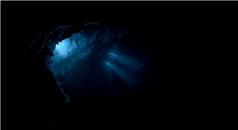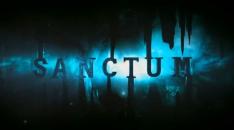AustLit
Latest Issues
AbstractHistoryArchive Description
Publication Details of Only Known VersionEarliest 2 Known Versions of
Works about this Work
-
y
 Finding Queensland in Australian Cinema : Poetics and Screen Geographies
London
:
Anthem Press
,
2016
11063066
2016
multi chapter work
criticism
Finding Queensland in Australian Cinema : Poetics and Screen Geographies
London
:
Anthem Press
,
2016
11063066
2016
multi chapter work
criticism
'‘Finding Queensland in Australian Cinema’ comprises eight essays, an introduction and conclusion, and the analysis of poetics and cultural geographies is focused on landmark films and television. The first section of the book, ‘Backtracks: Landscape and Identity’, refers to films from and before the revival, beginning with the 1978 film 'The Irishman' as an example of heritage cinema in which performances of gender and race, like the setting, suggest a romanticised and uncritical image of colonial Australia. It is compared to Baz Luhrmann’s 'Australia' (2008) and several other films. In the second chapter, ‘Heritage Enigmatic’, 'The Irishman' is also drawn into comparison with Charles Chauvel’s ‘Jedda’ (1955), as films that incorporate Indigenous performances in this heritage discourse through the role of voice and sound. In Part 2, ‘Silences in Paradise’, the first essay, ‘Tropical Gothic’, focuses on Rachel Perkins’s 'Radiance' (1998) as a landmark post-colonial film that questions the connotations of icons of paradise in Queensland. The discussion leads to films, in the next chapter, ‘Island Girls Friday’, that figure women on Queensland islands, spanning the pre-revival and contemporary era: ‘Age of Consent’ (1969), ‘Nim’s Island’ (2008) and ‘Uninhabited’ (2010). Part 3, ‘Masculine Dramas of the Coast’ moves to the Gold Coast, in films dating from before and since the current spike in transnational production at the Warner Roadshow film studios there, namely, 'The Coolangatta Gold' (1984), 'Peter Pan' (2003), and 'Sanctum' (2011). The final section, ‘Regional Backtracks’, turns, first, to two television series, ‘Remote Area Nurse’ (2006), and ‘The Straits’ (2012), that share unique provenance of production in the Torres Strait and far north regions of Queensland, while, in the final chapter, the iconic outback districts of western Queensland figure the convergence of land, landscape and location in films with potent perspectives on Indigenous histories in ‘The Proposition’ (2005) and ‘Mystery Road’ (2013). ‘Finding Queensland in Australian Cinema’ presents the various regions as syncretic spaces subject to transitions of social and industry practices over time.'
Source: Publisher's blurb.
-
Dog of a Year for Box Office but Wizard Works His Usual Magic
2012
single work
column
— Appears in: The Australian , 23 January 2012; (p. 3) -
Parables of Pacific Shores : Locations, Caves and Coastal Masculinities in Cast Away and Sanctum
2011
single work
criticism
— Appears in: Etropic : Electronic Journal of Studies in the Tropics , no. 10 2011; (p. 158-165) 'If one should imagine a map of production locations for dive films or films set on tropical islands since the 1960s, it would likely show a trend towards the southern hemisphere and more recently towards Queensland. Creative industries development in Queensland has been stimulated partly by state bodies, namely the Pacific Film and Television Commission, and Screen Queensland; and the presence of Warner Roadshow Studios on the Gold Coast, and filmmakers have also been attracted more recently by production offsets from Screen Australia. There is dim connection to the classical geography of the Antipodes as the underside of the world and a place of monsters.' (Author's introduction)
-
Faking It
2011
single work
review
— Appears in: The Weekend Australian , 19-20 February 2011; (p. 17)
— Review of Sanctum 2011 single work film/TV -
Under Water World
2011
single work
column
— Appears in: The Courier-Mail , 10 February 2011; (p. 4)
-
Faking It
2011
single work
review
— Appears in: The Weekend Australian , 19-20 February 2011; (p. 17)
— Review of Sanctum 2011 single work film/TV -
Up Close and Personal
2011
single work
column
— Appears in: The Courier-Mail , 7 February 2011; (p. 24) -
Under Water World
2011
single work
column
— Appears in: The Courier-Mail , 10 February 2011; (p. 4) -
Dog of a Year for Box Office but Wizard Works His Usual Magic
2012
single work
column
— Appears in: The Australian , 23 January 2012; (p. 3) -
Parables of Pacific Shores : Locations, Caves and Coastal Masculinities in Cast Away and Sanctum
2011
single work
criticism
— Appears in: Etropic : Electronic Journal of Studies in the Tropics , no. 10 2011; (p. 158-165) 'If one should imagine a map of production locations for dive films or films set on tropical islands since the 1960s, it would likely show a trend towards the southern hemisphere and more recently towards Queensland. Creative industries development in Queensland has been stimulated partly by state bodies, namely the Pacific Film and Television Commission, and Screen Queensland; and the presence of Warner Roadshow Studios on the Gold Coast, and filmmakers have also been attracted more recently by production offsets from Screen Australia. There is dim connection to the classical geography of the Antipodes as the underside of the world and a place of monsters.' (Author's introduction)
-
y
 Finding Queensland in Australian Cinema : Poetics and Screen Geographies
London
:
Anthem Press
,
2016
11063066
2016
multi chapter work
criticism
Finding Queensland in Australian Cinema : Poetics and Screen Geographies
London
:
Anthem Press
,
2016
11063066
2016
multi chapter work
criticism
'‘Finding Queensland in Australian Cinema’ comprises eight essays, an introduction and conclusion, and the analysis of poetics and cultural geographies is focused on landmark films and television. The first section of the book, ‘Backtracks: Landscape and Identity’, refers to films from and before the revival, beginning with the 1978 film 'The Irishman' as an example of heritage cinema in which performances of gender and race, like the setting, suggest a romanticised and uncritical image of colonial Australia. It is compared to Baz Luhrmann’s 'Australia' (2008) and several other films. In the second chapter, ‘Heritage Enigmatic’, 'The Irishman' is also drawn into comparison with Charles Chauvel’s ‘Jedda’ (1955), as films that incorporate Indigenous performances in this heritage discourse through the role of voice and sound. In Part 2, ‘Silences in Paradise’, the first essay, ‘Tropical Gothic’, focuses on Rachel Perkins’s 'Radiance' (1998) as a landmark post-colonial film that questions the connotations of icons of paradise in Queensland. The discussion leads to films, in the next chapter, ‘Island Girls Friday’, that figure women on Queensland islands, spanning the pre-revival and contemporary era: ‘Age of Consent’ (1969), ‘Nim’s Island’ (2008) and ‘Uninhabited’ (2010). Part 3, ‘Masculine Dramas of the Coast’ moves to the Gold Coast, in films dating from before and since the current spike in transnational production at the Warner Roadshow film studios there, namely, 'The Coolangatta Gold' (1984), 'Peter Pan' (2003), and 'Sanctum' (2011). The final section, ‘Regional Backtracks’, turns, first, to two television series, ‘Remote Area Nurse’ (2006), and ‘The Straits’ (2012), that share unique provenance of production in the Torres Strait and far north regions of Queensland, while, in the final chapter, the iconic outback districts of western Queensland figure the convergence of land, landscape and location in films with potent perspectives on Indigenous histories in ‘The Proposition’ (2005) and ‘Mystery Road’ (2013). ‘Finding Queensland in Australian Cinema’ presents the various regions as syncretic spaces subject to transitions of social and industry practices over time.'
Source: Publisher's blurb.
-
cPapua New Guinea,cPacific Region,




